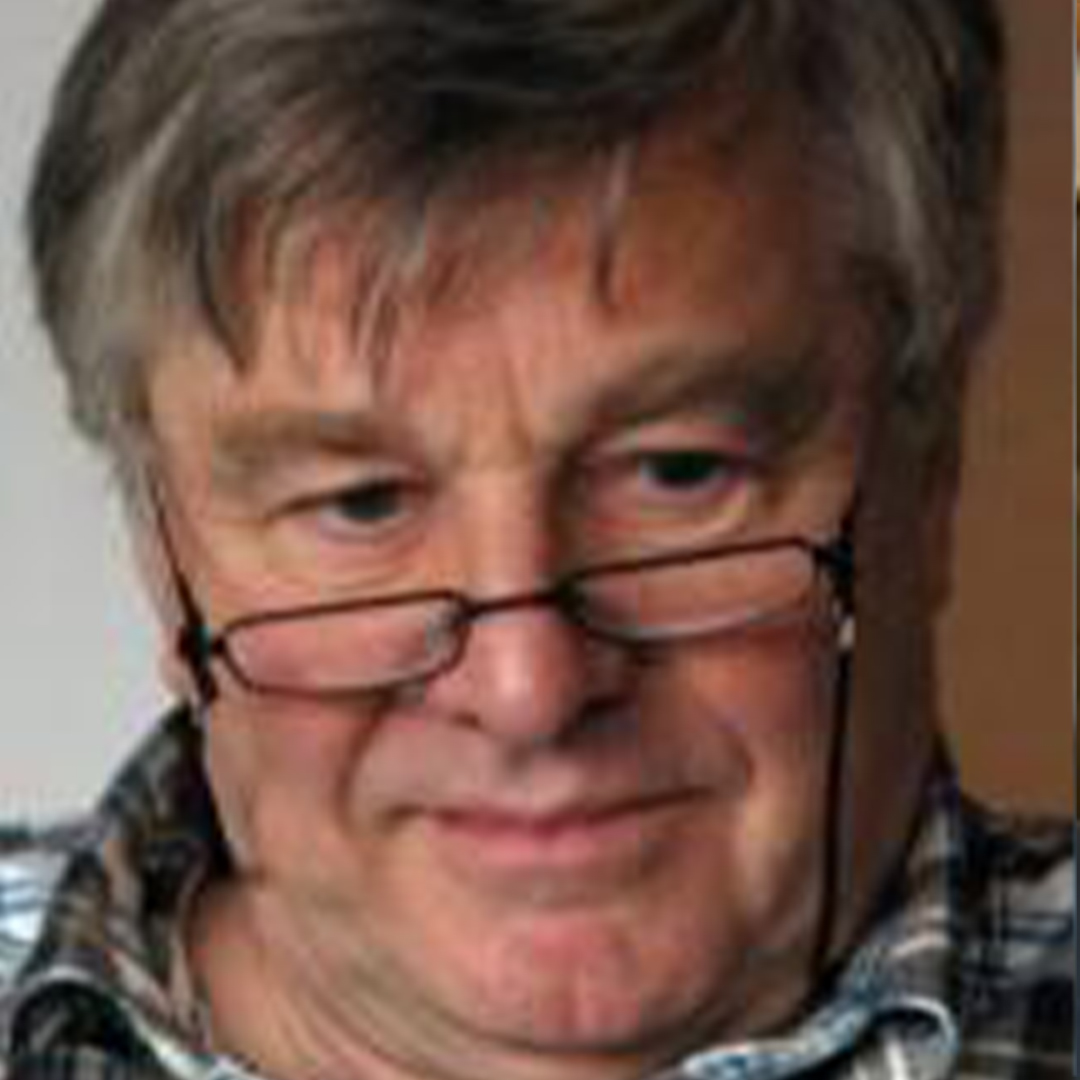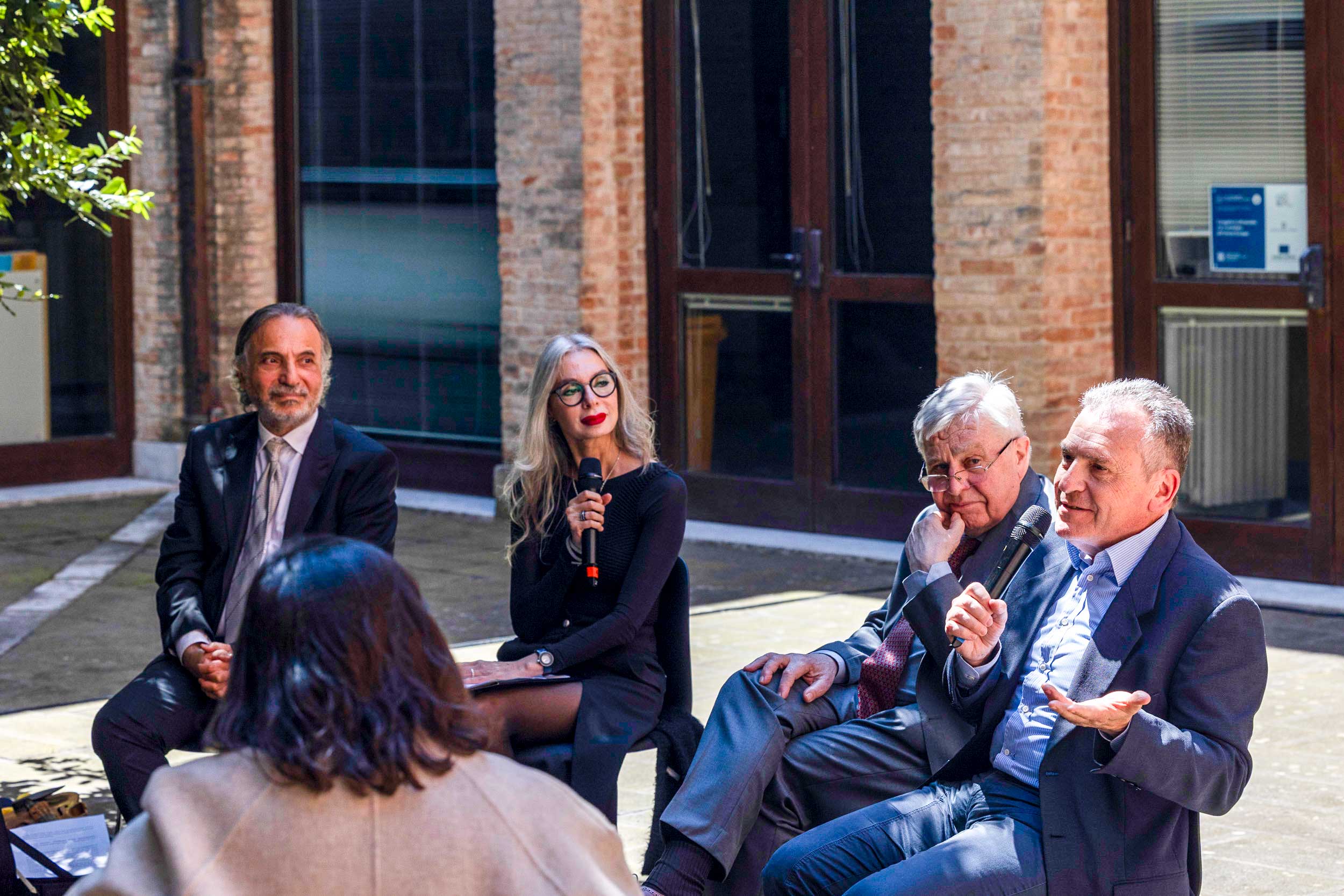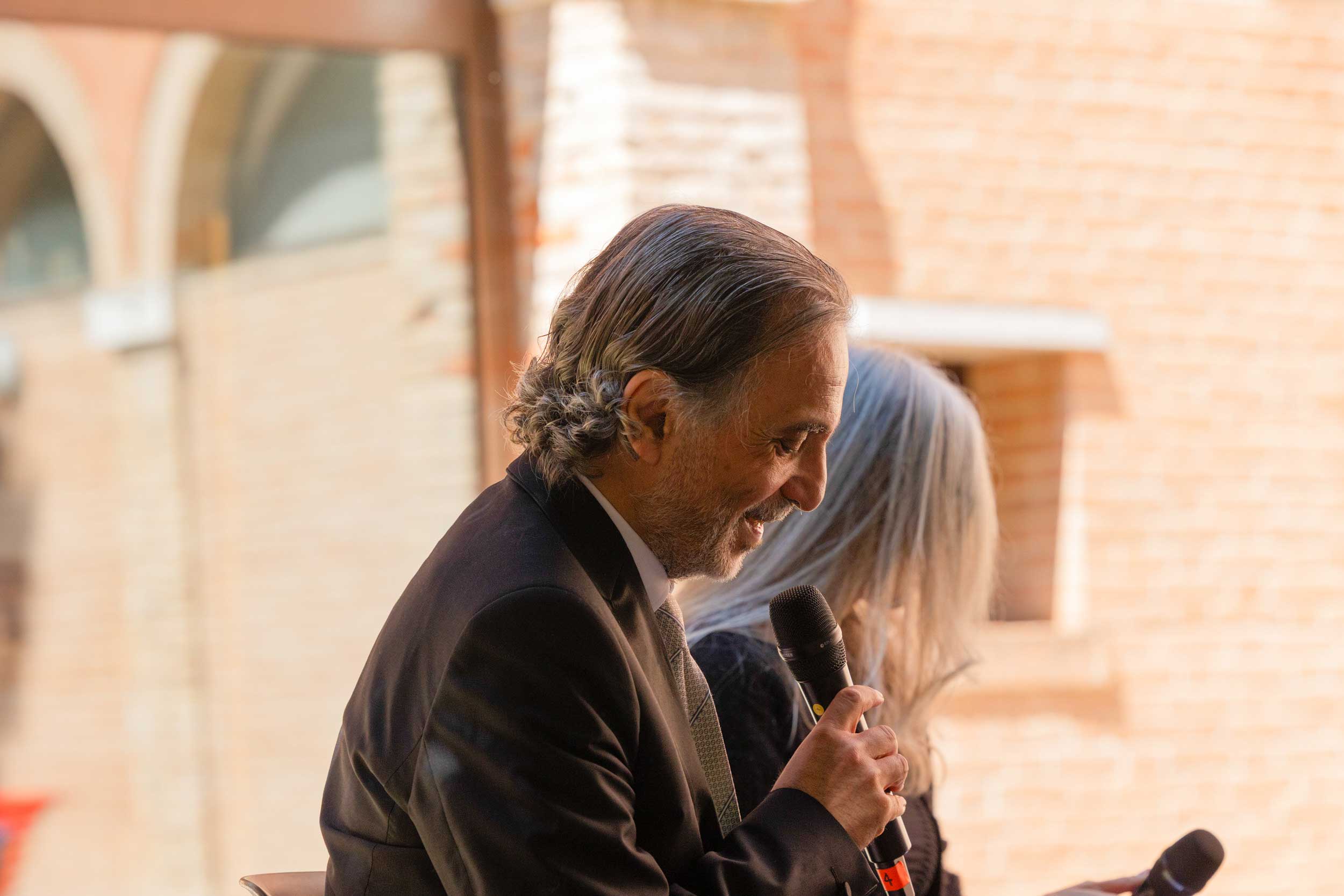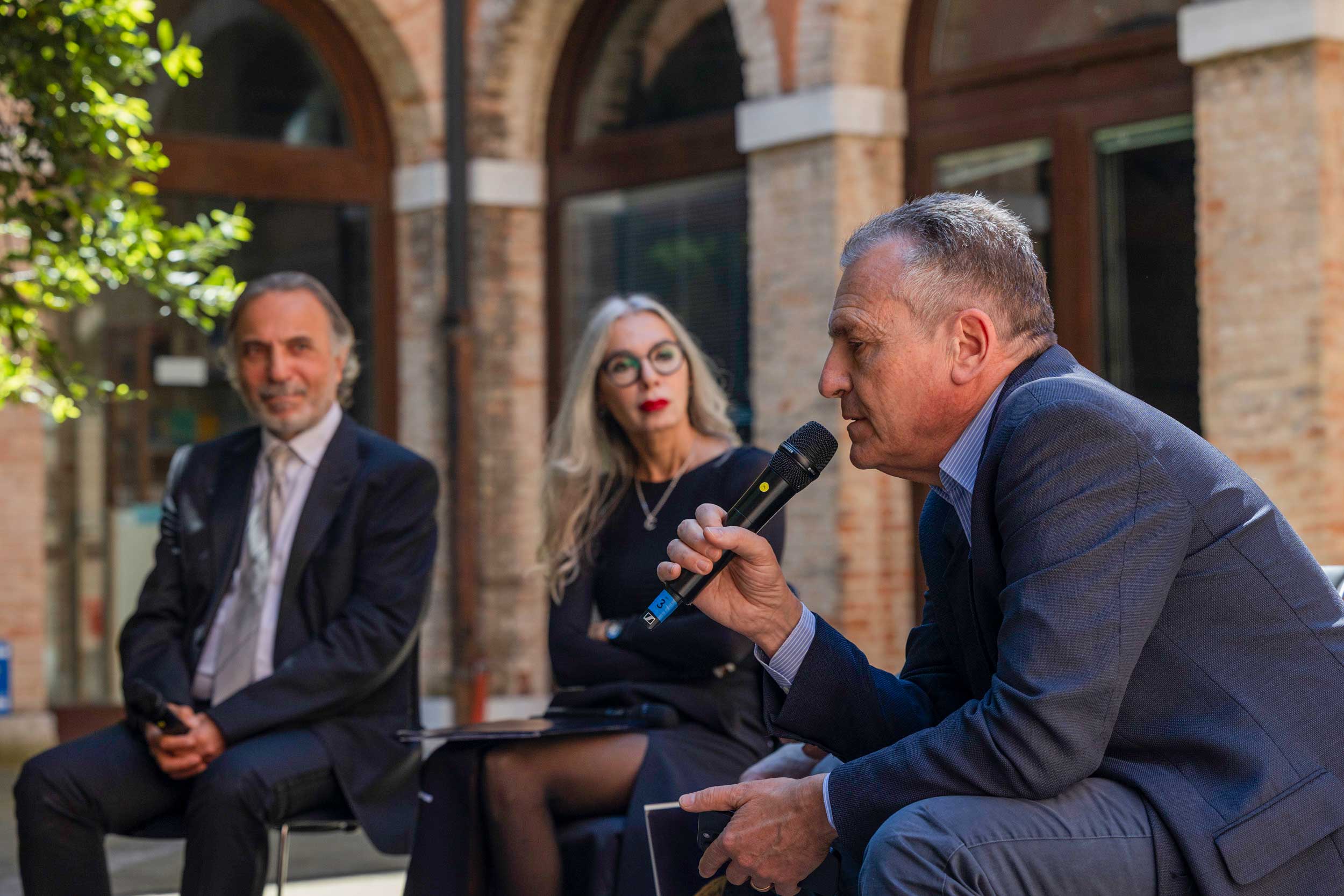Roundtable Panel Discussion:
“Modal/Tonal Musical Tree, Neuroscience and Therapy”
Presented within Tales from Earth curated by Princess Mashael AlShalan (Co-Founder) and Dr. Abdelkader Damani, Artistic Director of AEON Collective
Date: 11 May 2025
Location: San Lorenzo Church, Venice, Italy - Venice Biannele 2025
✏️ Professor Nidaa Abou Mrad, Artistic and Scientific Director of the Maqām Festival
The musical traditions of West Asia, North Africa and Medieval Europe are based on a common modal melodic system. The maqām mode of a traditional musical work provides the melodic alphabet and the typical formulas from which the phrasing is elaborated, at the same time as it colors the emotions conveyed, inducing ecstasy. If these great traditions converge on the level of this common melodic system, similar to the trunk of a very old tree, their cultural diversity is expressed by the traces that the prosody of the sung languages and the ritual and choreographic gestures, specific to the contextual cultures, leave in their rhythm and their musical styles and forms, thus generating a multitude of traditional musical branches. Thus, the important anonymous Arabic treatise on musical grammar a-š-Šajaratu ḏāt ul-akmāmi l-ḥāwiyatu ḏāt al-anġām (The Tree With the Calices Bearing the Essences of Modes) uses in the 16th century the modal tree symbol to describe the generative grammar of maqām modes: a maqām 'aṣl, original/fundamental trunk mode, generating maqāmāt furū’ branches-modes and melodic phrases. But this symbol, which is taken up by Goethe (1749-1832) in his Urpflanze (the original plant of all plants), Schenker (1868-1935) in his Ursatz (the original structure of all tonal compositions) and Chomsky in the generative arborescent elaboration of all the sentences of a language, does not but recapitulate the mystical archetype of the Tree of life of the Book of Genesis, becoming the Christic True-Vine in the Gospel of Saint John and the Bright Olivier of the Surah of Light. This mystical dimension is underlined by the etymology of the word maqām (degree) borrowed from Sufism and its maqāmāt, ascetic gradations generating aḥwāl, ecstatic states of divine closeness. This illumination is combined with a healing of the soul and the body, as witnessed by the chronicles of the Arab hospitals where sedative music therapy was practiced, as well as another anonymous Arabic musical treatise of the 16th century that teaches the art of healing various pathologies through the ethos(emotional color) of maqām and its cosmological inscription (elemental and humoral) which induce a ṭarab sedative ecstasy or a ṭarab cathartic trance.
The scientific component of the "Maqām Tree of Life” program consists of a panel lecture and discussion on the dual theme of the musical tree in modal and tonal music and of the neurocognitive treatment of modal and tonal music, with its therapeutic implementation.
Speakers (in alphabetical order)
Professor Nidaa Abou Mrad
(Sorbonne Université, Institut de Recherche en Musicologie, Antonine University, Maqām Festival)
Professor Paolo Bartolomeo
(Paris Brain Institute, Sorbonne Université)
Professor Nicolas Meeùs
(Sorbonne Université, Institut de Recherche en Musicologie)
Moderator:
Professor Viviane Naimy (Notre Dame University)

Professor Nidaa Abou Mrad (Sorbonne Université, Collegium Musicae, IReMus, Antonine University, Maqām Festival)
Abstract: "Modal Music in its Neurocognitive Emotional Apprehension and its Therapeutic Applications"
Prof. Abou Mrad proposes to recapitulate the argument “Maqām Tree of Life” to explain the notion of modal music, in its arborescent musical grammaticality producing global introversive musical signification (ethos) and segmental introversive musical signification (expectation and resolution states), in addition to the extroversive musical signification related to musical parameters (mainly the temporal or rhythmic parameter) strongly determined by culture. These melodic meanings translate into the development of emotions at the cerebral level (reward and pleasure system) which can go as far as the induction of states of ecstasy and trances (conferring a common biological component to these melodic meanings, which are modulated by the listener’s personal and cultural equation and listening context). However, theories of ethos and practices of musical induction trance are at the origin of theories and practices of sedative modal music therapy among Arabs in the Middle Ages. Prof. Abou Mrad will describe experimental studies in neuromusicologie currently being conducted between Lebanon and France, to try to objectify by functional neuroimaging the cerebral substrate of the emotional impact of listening to monodies. This research is expected to have repercussions in the field of music therapy, trying to reconnect the Western contemporary music therapy with its sources in West Asia and the Mediterranean.
Biography
MD and PhD in Musicology, is currently Senior Professor of Musicology, Neuropsychology of Music and Music Therapy at Sorbonne Université (Paris), Institut de recherche en Musicologie (UMR 8223) and coordinator of the international scientific network “Music, neuroscience and therapy” at the Collegium Musicæ, Sorbonne Université, at the same time as the Dean of the Faculty of Music and Musicology and the Director of the Research Centre for Music Traditions at the Antonine University (Lebanon), and the editor in chief of the peer reviewed journal titled Revue des traditions musicales. He has published a large number of articles and authored the book titled Elements of Modal Semiotics: An Essay on Generative Grammar for Monodic Traditions, in which he drew his own theory on the Modal Semiotics and for which he won the CNRS-L Annual Research Excellence Award in 2017, in the category “Multidisciplinary cognitive research”. As a violin player and a composer, with twenty audio CDs, he is specialized in the art music tradition of the Mašriq.

Professor Paolo Bartolomeo (Sorbonne Université, Institut du Sorbonne Université, Paris Brain Institute, Inserm, CNRS, APHP, Hôpital de la Pitié Salpêtrière, Paris
Abstract: Medicina Doloris: Can Music Reconnect the Post-Stroke Brain?
Brain strokes often induce disabling cognitive deficits. Recent advances highlight the importance of intra- and inter-hemispheric connectivity for recovery from stroke-induced attention deficits. Can audio-visual music experience, which engages coordinated bi-hemispheric brain activity, help compensate for post-stroke deficits by reconnecting brain regions isolated by the stroke? I will discuss a rehabilitation protocol based on these notions and present some preliminary results.
Biography
MD, PhD, is a clinical neurologist and neuroscientist with recognized expertise in the cognitive neuroscience of subjective experience. He leads the PICNIC Lab at the Paris Brain Institute, housed within the Pitié-Salpêtrière Hospital in Paris. From 2008 to 2015 he was a full professor of cognitive neuroscience at the Catholic University in Milan, Italy. Dr. Bartolomeo’s research has made high-impact contributions to understanding the structural and functional neuroanatomy of attention, perception, and mental imagery. His work employs a multidisciplinary approach integrating cutting-edge behavioral assessments, advanced neuroimaging, and neurostimulation techniques. His investigations, spanning healthy individuals and patients with brain injuries, have provided insight into the neural basis of conscious experience, cognitive recovery in stroke, and the dynamic interactions between perception and attention. An ongoing project investigates how listening to classical music affects brain connectivity and cognitive recovery in stroke patients.

Professor Nicolas Meeùs (Sorbonne University, IReMus)
Abstract: "Introversive and Extroversive Musical Semiosis"
Roman Jakobson describes introversive semiosis as “a message which signifies itself, […] indissolubly linked with the aesthetic function of sign systems;” he also mentions the “referential component” of extroversive semiosis. So doing he clearly defines two types of musical signification, the one intrinsic, consisting in reciprocal relations between elements (e.g. motives) in the music itself, and the other extrinsic, referring to the outside world. Pr. Meeùs will recall what 19th- and 20th-century German philosophers and musicians, mainly Hegel, Hanslick and Schenker, called the “content” (Inhalt) of music, its intrinsic meaning; and how the 20th- and 21th-century International Project on Musical Signification (IPMS) often reduces the signification of music to a narrative, the story that music presumably tells. Heinrich Schenker in particular described the intrinsic musical signification as organically growing from the Ursatz, the primal structure of the work, to its surface, its score; while the IPMS at times forcefully rejects any signification that would not be of the order of musical narrativity.
Biography
PhD, HDR, is Permanent Researcher at the Institut de Recherche en Musicologie (UMR 8223), Emeritus Professor in Sorbonne Université where he has been Director of the Music Faculty (1999-2004), Assistant Director of the Fifth Doctoral School, “Concepts et Langages” (2004-2013). He worked for twenty-five years in the Brussels Museum of Musical Instruments, of which he has been Assistant Director, then Director (1975-1995). He was editor in chief of the peer reviewed journal Musurgia (2001-2017). His research domains include organology, Western music history, music theory and its history, music analysis, Schenkerian analysis. He is the French translator of Schenker’s Der freie Satz. He was the director of 24 PhD theses in the Catholic University of Louvain (Belgium) and in Sorbonne Université (Paris).

Professor Viviane Naïmy is a Professor of Finance and Dean of the Faculty of Business Administration and Economics at Notre Dame University, Lebanon. A recognized expert in financial econometrics and risk management, she has an extensive record of publications in these fields. As Dean, she successfully led the AACSB accreditation and other programmatic accreditation processes. She initiated the establishment of the Journal of Sustainable Economies in collaboration with Northeastern University and serves as its Managing Editor. The journal is dedicated to tackling global challenges related to poverty and hunger. Professor Naïmy also leads the Beta Gamma Sigma (BGS) chapter at Notre Dame University and was named Dean of the Year 2025 by Beta Gamma Sigma, selected from among 640 AACSB-accredited universities across 37 countries. In addition, she co-founded and presides over the Sustainable Farming Technology Association (SFT), focusing on sustainable agriculture and supporting poverty alleviation efforts in Lebanon.

AEON Collective is a non-profit WAQF driving impact and regenerative development in Saudi Arabia and globally. Through a human-centric, nature-positive approach, we integrate science, culture, and innovation to empower communities and restore balance between people and planet.
TBA21 is a global art and advocacy foundation committed to social and environmental transformation. Through its collection, exhibitions, and Ocean Space in Venice, it supports artists and cultural practices that foster peace, affirm life, and celebrate diversity.
Programs
مُلْتَقَى المُوسِيقَى المَقامِيَّة
P.O. Box 288
Postal Code 12311 Dokki
Giza, Egypt
Multaqa al-Musiqa al-Maqamiyya LLC
P.O Box 35938, Dubai, UAE
Tel./whatsapp: +20 109 0379090
info@maqamfestival.com
www.maqamfestival.com
©2023-2026 Maqām Festival. All rights reserved.




